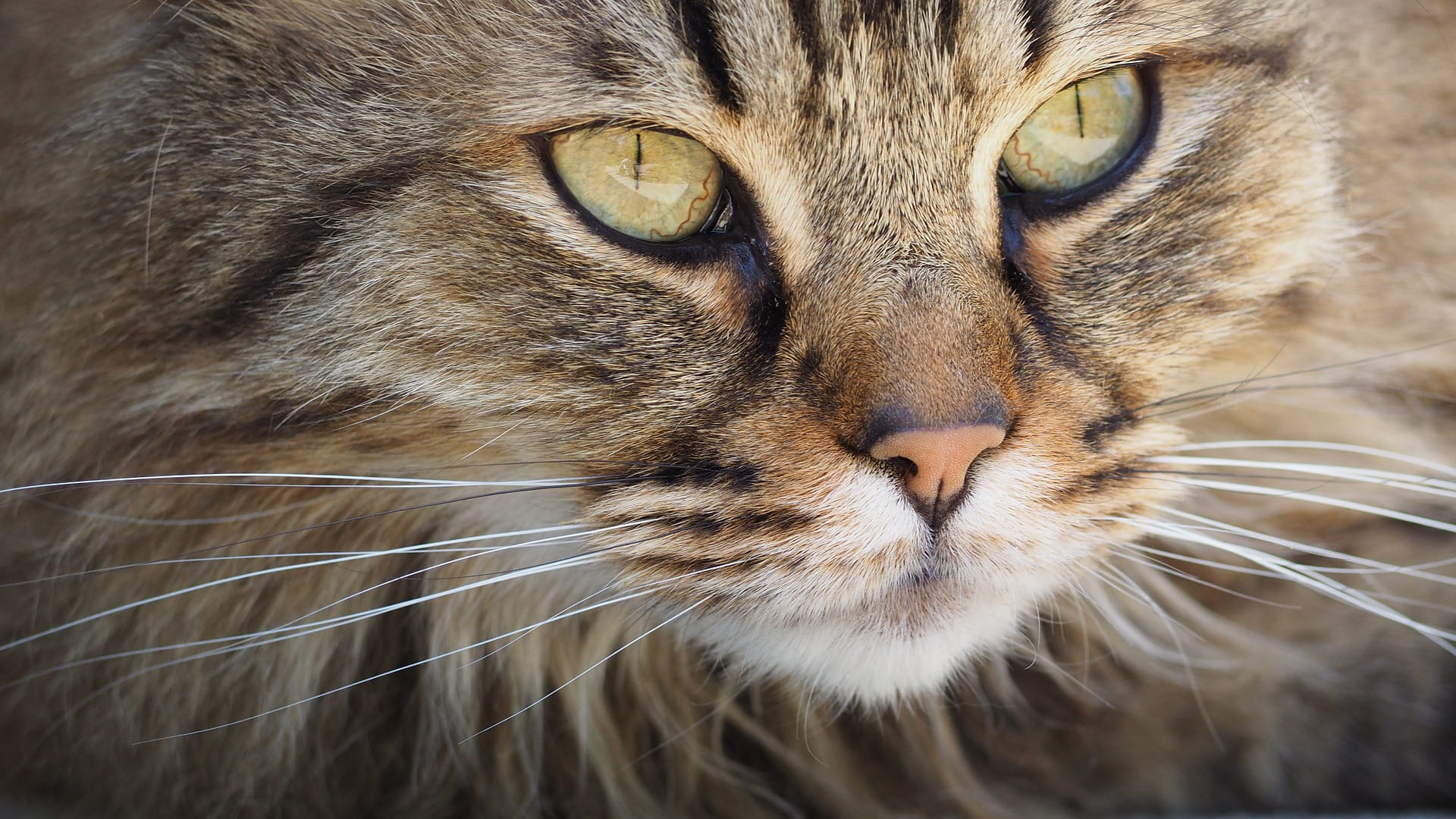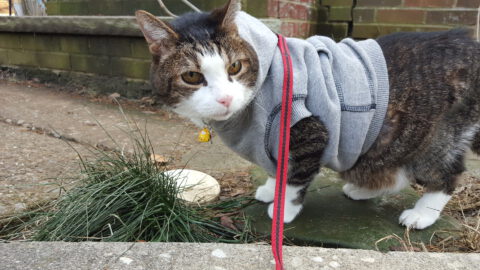Last Updated on March 9, 2020
Whiskers are not only an adorable feature every cat has but they are remarkably key to a cat’s survival. Here are 6 facts on cat whiskers not many people know!
1. Can I Fit in There?
Cats use their whiskers to determine what they can and cannot fit into. Genetics play a role in the length they become when a cat reaches adulthood. While size can factor in the overall length, there is no scientific evidence to say overweight cats have longer whiskers over those who are of healthy weight.
2. Read my Face
The whiskers act as a facial expression for cats. If the whiskers are immobile, laying mostly straight from one side to the other, your cat is content. If you notice the whiskers firmly laying on the cat’s cheeks, he/she may be nervous, scared or angry.
3. Where’re My Glasses?
Cats are naturally far-sided in their vision. This means anything up close becomes a little blurry. When a cat is hunting, the whiskers act as feelers letting him/her know when precisely to bite down on the prey to kill it.
4. Did You Feel That?
At the core of every whisker are sensitive nerves and blood flow making even the very tip of each whisker very sensitive. This allows them to detect even the smallest change in a breeze and even allows them to feel vibrations better. Whiskers are not just on the sides of the nose either! They can be found above the eyes, behind the ears, under the chin and on the lower front legs of every cat.
5. Kung-Fu Kitten
Just as their eyes and tails are important to balance, so are their whiskers! The nerves tied to the whiskers on the sides of your cat’s nose stem back up into the equilibrium. This comes in use with hunting, jumping and even finding a good position to lay in. Because of their high sensitivity damaging them, cutting them or simply allowing them to eat from small bowls can cause them pain, dizziness, disorientation, and confusion. Never, ever, EVER cut a cat’s whiskers.
6. Hide and Seek
Just as the eyes are designed for low lighting, their whiskers play a part in nighttime navigation as well! In minimal lighting and even complete darkness, the whiskers allow the cat to maneuver around objects without directly running into them or even touching them.





First fact is so cool.